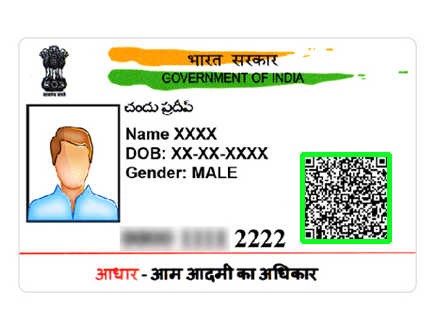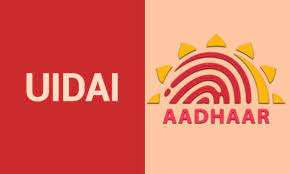In the realm of digital identity and government initiatives, UIDAI stands as a significant acronym that holds paramount importance. UIDAI, which stands for Unique Identification Authority of India, is a government agency responsible for implementing the Aadhaar program – a unique 12-digit identification number issued to Indian citizens. This article delves into the intricacies of UIDAI, exploring its purpose, benefits, controversies, and more.
Table of Contents
- UIDAI Full-Form: Introduction to UIDAI
- UIDAI Full-Form: The Aadhaar Program: An Overview
- UIDAI Full-Form: UIDAI’s Role in Digital Identity
- UIDAI Full-Form: Benefits of Aadhaar and UIDAI
- UIDAI Full-Form: Ensuring Privacy and Security
- UIDAI Full-Form: Controversies Surrounding UIDAI
- UIDAI Full-Form: Steps to Enroll for Aadhaar
- UIDAI Full-Form: Linking Aadhaar to Various Services
- UIDAI Full-Form: Mobile Aadhaar Services
- UIDAI Full-Form: How UIDAI Prevents Fraud
- UIDAI Full-Form: Linking Aadhaar to Various Services
- UIDAI Full-Form: Mobile Aadhaar Services
- UIDAI Full-Form: Future Scope and Innovations
- UIDAI Full-Form: Global Perspective on Digital Identity
- UIDAI and Financial Inclusion
- UIDAI Full-Form: Balancing Convenience and Privacy
- Frequently Asked Questions(FAQs)
Introduction to UIDAI
UIDAI, established in 2009, is a statutory authority under the provisions of the Aadhaar Act. Its primary objective is to issue every Indian resident a unique identification number linked to their biometric and demographic data. This initiative aims to provide a single identification method that can be used across various services and sectors.
The Aadhaar Program: An Overview
The Aadhaar program, created and carried out by UIDAI, has grown to become the biggest biometric identifying system in the world. It entails gathering and preserving a person’s personal information, such as demographic data, iris scans, and fingerprints. By preventing fraud and duplication, the program was created to expedite the provision of government benefits, subsidies, and services.
UIDAI's Role in Digital Identity
UIDAI plays a pivotal role in ushering India into the digital age. By providing a universal identification method, it enables citizens to seamlessly access public services, open bank accounts, avail of healthcare facilities, and much more. This centralized identification system reduces the need for multiple documents, making administrative processes more efficient.
Benefits of Aadhaar and UIDAI
The benefits of Aadhaar and UIDAI are multifaceted. They lead to efficient service delivery, reduced identity fraud, financial inclusion, and improved targeting of welfare schemes. Moreover, Aadhaar-linked transactions reduce bureaucracy and ensure that government benefits reach those who need them the most.
Ensuring Privacy and Security



While UIDAI offers convenience, concerns about privacy and data security have arisen. To address these concerns, UIDAI follows stringent security protocols. Biometric information is encrypted and stored in secure databases, and stringent access controls are in place to prevent unauthorized use.
Controversies Surrounding UIDAI
Despite its merits, the Aadhaar program has faced controversies. The possible exploitation of citizen data is one of the main worries. Unauthorized access and data breaches have occurred, raising concerns about the system’s overall security.



Steps to Enroll for Aadhaar
Enrolling for Aadhaar is a straightforward process. Individuals need to visit an Aadhaar enrollment center, provide their demographic and biometric information, and receive an acknowledgment slip. The unique Aadhaar number is then sent to the registered address.
Mobile Aadhaar Services
UIDAI has introduced mobile Aadhaar services, allowing users to carry their Aadhaar information on their smartphones. This virtual Aadhaar can be used as a valid identification proof, reducing the need to carry physical documents.
How UIDAI Prevents Fraud
UIDAI employs advanced technologies to prevent fraud. Biometric authentication, two-factor authentication, and virtual IDs are some measures that contribute to a secure and trustworthy identification system.
Future Scope and Innovations
The future of UIDAI holds promises of further technological advancements. The integration of blockchain, enhanced security features, and interoperability with global identification systems are on the horizon.
Global Perspective on Digital Identity
UIDAI’s success has attracted global attention to the potential of unified digital identity systems. Several countries are now exploring similar initiatives to streamline public services and enhance security.
UIDAI and Financial Inclusion
UIDAI has played a vital role in bringing financial services to the underserved population. Aadhaar-enabled payment systems and direct benefit transfers have revolutionized the way subsidies and funds are disbursed.
Balancing Convenience and Privacy
The journey of UIDAI is a delicate balance between convenience and privacy. Striking this balance ensures that citizens can access services without compromising their personal data.
Conclusion
In the age of digitization, UIDAI stands as a pioneering force that has redefined how governments approach identity management. The Aadhaar program, it has brought millions of Indians into the formal financial system, improved service delivery, and sparked discussions on privacy and security. As technology continues to evolve, UIDAI’s journey remains an exemplar of innovation and transformation.
Steps to Enroll for Aadhaar
Enrolling for Aadhaar is a straightforward process. Individuals need to visit an Aadhaar enrollment center, provide their demographic and biometric information, and receive an acknowledgment slip. The unique Aadhaar number is then sent to the registered address.
UIDAI - Frequently Asked Questions(FAQs)
No, Aadhaar is not mandatory for all citizens, but it is widely used for various services.
Yes, foreign residents can obtain Aadhaar if they reside in India for a certain period.
Aadhaar uses biometric and demographic data, making it more secure and efficient.
Yes, individuals can update their Aadhaar information, including demographic details.
- The future holds innovations like blockchain integration and enhanced security measures.






